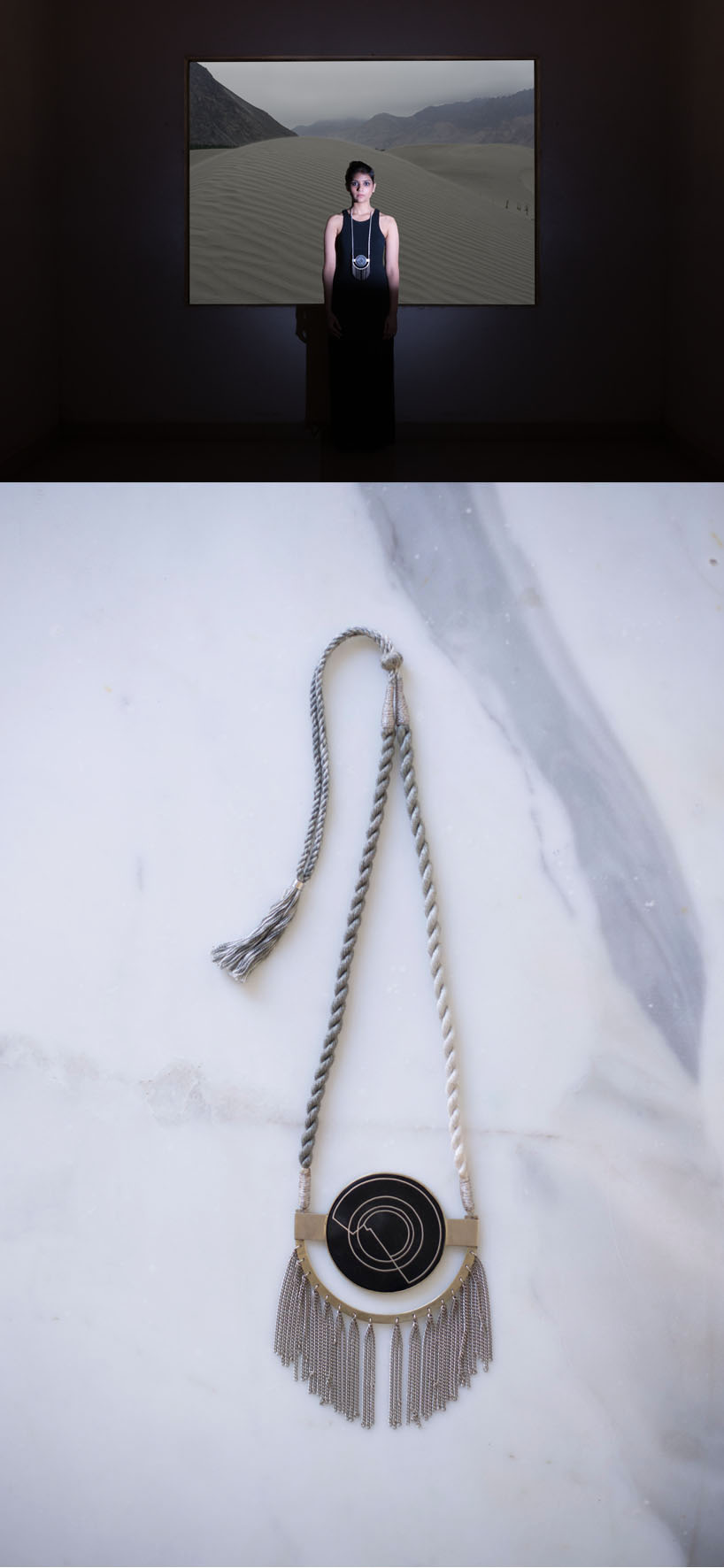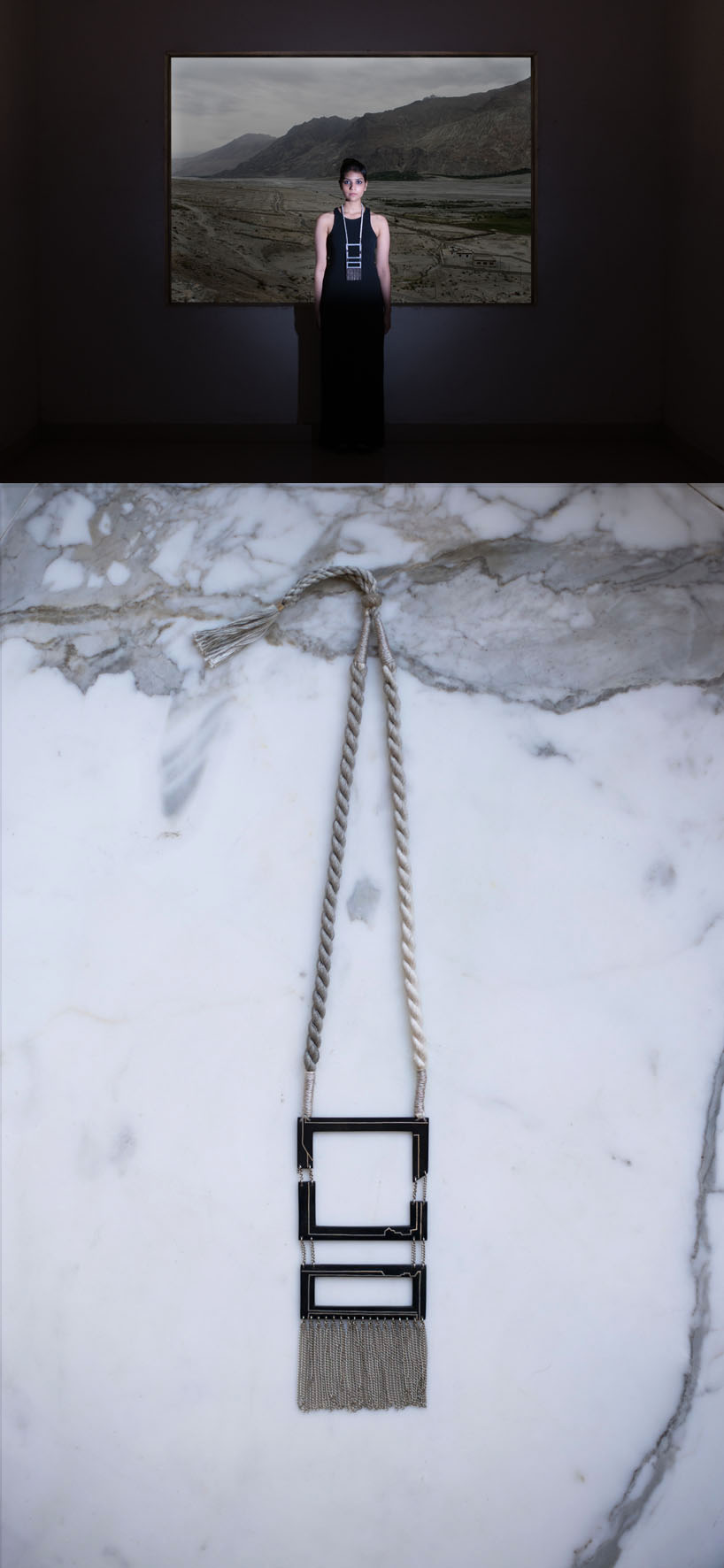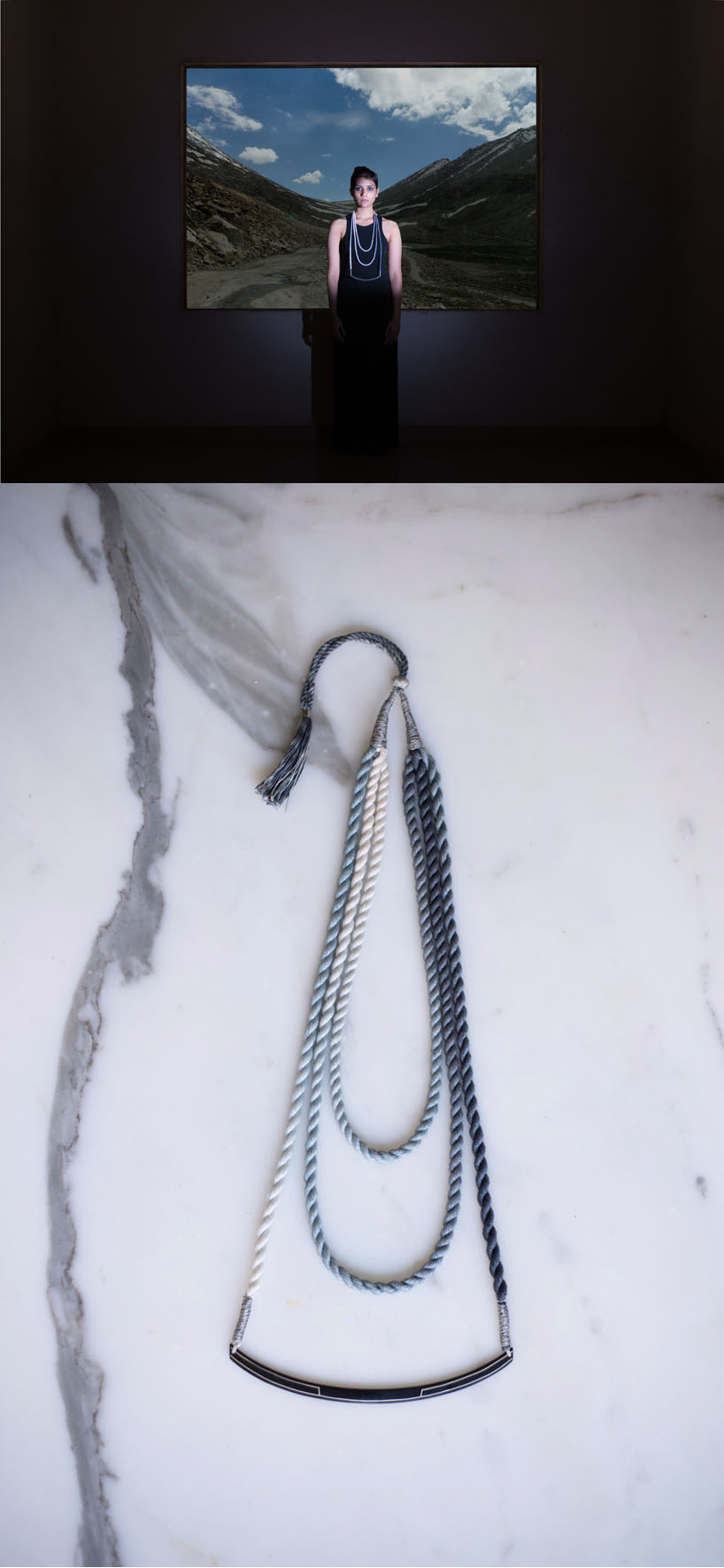
ore by ORE from india
designer's own words:
ore
ore is a socially-responsible jewelry line that uses the traditional Deccan handicraft- bidri as its focus. Bidri is a royal art form that has its origins in the Deccan region of India, is the art of inlaying silver in black metal (zinc and copper). We aim to push it's iconic ornate novelty quality into a new functional light, stripped of the superfluous down to it's very essence, where it rests between its ancestral roots and the sphere of modern minimalist design.
Inspired by a journey across the Ladhaki landscape, ore is a study of the visual layering and line-work of the region, shifting from nature to architecture and bringing the two within a single frame. Using Ladhaki jewelry as a springboard for form and method of adornment, ore then deconstructs all these forms and patterns further to its bare structural lines and the juxtaposition between them.
The conceptualization of ore brings together a tradition of craft from one region with the aesthetic of another, an act which we believe is a true representation of our global lifestyle – one which absorbs one another’s traditions and practices regardless of our geography. The introduction of metalwork and hand-dyed elements completes the suggestion of this process to create new Indian aesthetics. The metalwork, done by local babus, challenges traditional jewelry-construction processes, and the hand dip-dyeing brings the intimacy of the piece and its construction closer to the wearer. ore is thereby an attempt to amalgamate multiple visual cultures to interact harmoniously and, consequently, create a harmony that provokes discourse.
ore maintains a commitment to sustainable economic development and the belief that we can truly move forward if we design for a sustainable future. This is done through pushing traditional process techniques forward and challenging them, preserving our craft heritage and creating better livelihoods for our artisans. ore ultimately aims to be a starting point for the creation of endless possibilities of new relationships within the country, from craft to craft and person to person.
Below is a brief description of each piece (1-6)
1. Hemis
Named after the oldest monastery of the region, the form of Hemis draws inspiration from traditional Ladhaki jewelry and the pattern from the layered structure of the tops of its monasteries, together encasing the tradition of the region and linking one to the other.
2. Indus
Drawing inspiration from the ancient Indus river, Indus embodies the principles of circularity, time and movement through its form and concentric line-work. The line-work also pays homage to the Ladhaki tradition of layering lines in their jewelry.
3. La
A structural piece, La references the passes carved out within the rocky terrain and uses cording and tassels, a significant part of Ladhaki jewelry, to bridge the elements.
4. Shanti
Inversing the dome of the Shanti Stupa, Shanti breaks down the curved lines that form the tiered structure into three parts that fit into and connect with each other, in an act of recognition to the layered architectural system prevalent in the region.
5. Stok
A representation of the stacked rectilinear Ladhaki architecture, Stok breaks down these forms and lines to its basic elements and then reconstructs them in relation to the more jagged mountains and plateaus of the surrounding landscape.
6. Zanskar
Connecting the form of water and waves with the curves of the heavy Ladhaki chokers, Zanskar is based on continuity and flow.
Hemis_ore Indus_ore
Indus_ore La_ore
La_ore Shanti_ore
Shanti_ore Stok_ore
Stok_ore Zanskar_ore
Zanskar_ore